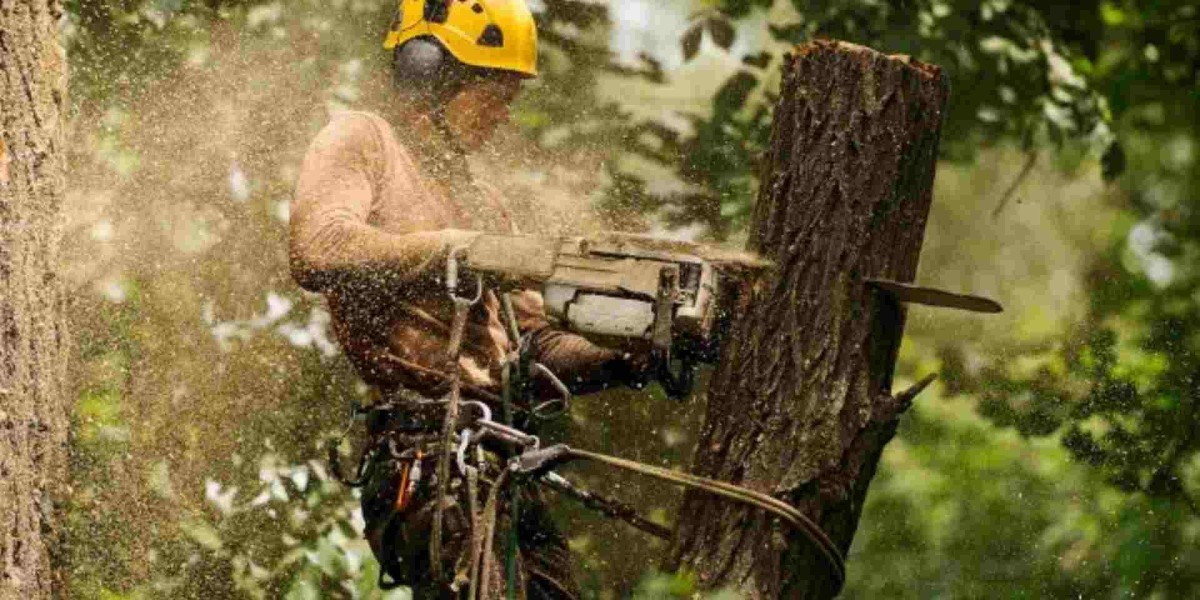Got a tree that's dead, diseased, or dangerously close to your house? It might be time to consider tree removal. Whether it’s for safety, landscaping, or construction, removing a tree is not just a matter of grabbing a chainsaw and going to town. There’s a lot more to it—planning, permits, safety, and cleanup.
In this guide, we’ll walk you through everything you need to know about removing a tree from your property, including when to do it, how it’s done, and why hiring a pro is usually the best call.
Why Tree Removal May Be Necessary
Not every tree deserves to be cut down, but sometimes it’s the only safe or practical option. Here are common reasons:
Dead or Dying Trees: They can fall at any moment, risking property or injury.
Diseased Trees: Fungal infections or pest infestations can spread to other healthy trees.
Storm-Damaged Trees: Heavy winds or lightning can destabilize a tree’s structure.
Overcrowding: Sometimes trees need to be removed to allow others to thrive.
Construction or Landscaping Projects: New structures may require clearing trees from the area.
Root Problems: Invasive roots can damage foundations, driveways, and plumbing.
Signs That a Tree Should Be Removed
Wondering if a tree on your property is past the point of saving? Watch for these red flags:
Cracks or splits in the trunk
Hollow or decayed areas
Excessive leaning
Dead branches, especially at the top
Mushrooms or fungi growing around the base
No leaf growth during the growing season
The Tree Removal Process (Step-by-Step)
Here’s how a professional tree removal usually goes:
1. Inspection and Assessment
An arborist evaluates the tree’s condition, height, and surroundings. They check for signs of disease, pests, and potential risks.
2. Permits and Regulations
Some municipalities require a permit for tree removal—especially for large or protected species. Check with your local government.
3. Planning the Removal
The crew determines the best method: felling the tree in one piece (in open areas) or dismantling it in sections (for tight or dangerous spaces).
4. Equipment Setup
Professionals use chainsaws, rigging ropes, cranes, or bucket trucks depending on the job's complexity.
5. Cutting and Dismantling
Branches are removed first, followed by the trunk cut down in manageable sections.
6. Stump Grinding (Optional)
If requested, the stump is ground below soil level for a clean finish.
7. Cleanup
Reputable services clean up all debris, leaving your yard neat and safe.
Dangers of DIY Tree Removal
Sure, you could try it yourself—but should you? Tree removal is incredibly dangerous if you’re not trained and equipped properly. One wrong cut and that tree could fall in the wrong direction—on your house, your neighbor’s garage, or worse.
Risks include:
Falling from ladders
Chainsaw injuries
Electrocution from power lines
Damage to property or underground utilities
Bottom line: Hire a pro unless it’s a very small tree in a wide-open space.
Cost of Tree Removal
Tree removal prices vary depending on several factors:
Tree size: Taller trees cost more due to increased labor and risk.
Location: Trees near structures or power lines need more precision.
Condition: A dead or leaning tree is more dangerous to remove.
Stump grinding: This is usually an extra charge.
Typical Price Ranges:
Small tree (under 30 feet): $150 – $500
Medium tree (30–60 feet): $400 – $1,200
Large tree (over 60 feet): $800 – $2,500+
Always ask for a detailed quote from multiple providers before committing.
Tree Removal vs. Tree Trimming
Not all problem trees need to be removed. Sometimes, a good trim or pruning can solve the issue.
| Tree Trimming | Tree Removal |
|---|---|
| Removes dead/damaged branches | Removes entire tree |
| Encourages healthy growth | Used when tree is dead, diseased, or unsafe |
| Cheaper and quicker | More labor-intensive and costly |
If you're unsure, ask a certified arborist for an opinion before going straight to removal.
Do You Need a Permit to Remove a Tree?
In many areas, yes.
Some cities protect certain types of trees (like heritage or native species), and removing one without permission can lead to heavy fines. Always check with your local city office or urban forestry department.
What Happens After Tree Removal?
After the tree is down, you’ve got some choices to make:
Stump Grinding: Grinds the stump below ground level so you can landscape over it.
Full Stump Removal: More invasive and expensive, but removes the entire root system.
Leave the Stump: Not recommended—it can attract pests and become a tripping hazard.
How to Choose a Tree Removal Service
Don’t just go with the cheapest option. Look for:
ISA Certified Arborists
Licensed and Insured
Great Reviews
Detailed Estimates
Cleanup Included
Ask how they handle emergency situations and whether they use cranes or heavy equipment.
Eco-Friendly Tree Removal
Trees are important, so if you must remove one, consider:
Replanting another tree elsewhere
Using the wood for mulch or firewood
Donating usable logs to local artisans or builders
Many responsible companies will even offer replanting services as part of the package.
Conclusion
Tree removal isn’t something to take lightly. Whether it’s for safety, aesthetics, or space, removing a tree should always be approached with care and professionalism. While it might be tempting to do it yourself, the risks just aren’t worth it. With the help of a skilled, certified team, you can keep your property safe—and maybe even plant something better in its place.
FAQs
1. Can I remove a tree myself?
It’s not recommended unless it’s small, in an open area, and you have proper equipment. For anything larger or near buildings, hire a pro.
2. How long does tree removal take?
Most jobs take a few hours, but it can take a full day depending on size and complexity.
3. Will removing a tree damage my yard?
Professional crews use equipment and techniques to minimize damage, and most include full cleanup.
4. Is tree removal covered by homeowners insurance?
Sometimes—usually if the tree was damaged by a covered peril like a storm. Check your policy.
5. What happens to the tree once it’s removed?
It’s typically chipped into mulch or hauled away. You can ask to keep the wood if you’d like.






